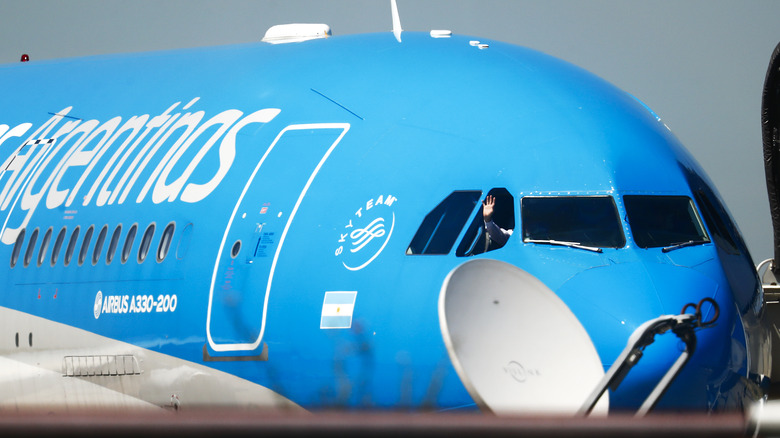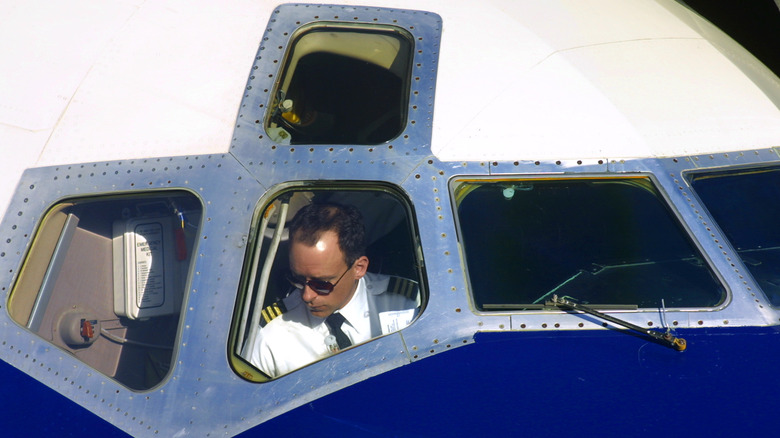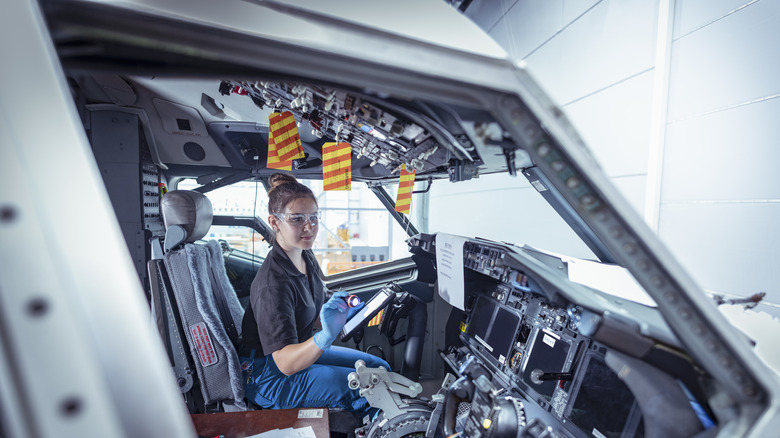Why Do The Cockpit Windows Open On Some Aircraft?
Airplane windows might seem ordinary, but they are as much of an engineering marvel as the rest of a modern aircraft. These windows are made of three layers of material to facilitate the plane's pressurization without breaking under such enormous forces. While the cabin windows are not meant to be opened by the passengers under usual circumstances, the cockpit side windows are a different story.
These windows on some aircraft — like the Boeing 737, 767, and 777 and Airbus A330 — are designed to be used by the cockpit crew in an emergency (and no, using them is not as cumbersome as opening an emergency exit door in the main cabin). These windows also help pilots and ground crew before the flight takes off. You might wonder how such easily accessible portals don't become a safety hazard, as broken airplane windows and the Boeing 737 MAX 9 door debacle have made big news. In truth, the ingenious design of the windows and aerodynamics of an aircraft make these openable cockpit windows extremely safe. Let's dive in and explore why planes must have cockpit windows that open along with the science behind their design.
Cockpit windows are normally only opened on the ground
Cockpit windows serve a variety of important functions for pilots. Most notably, these windows can serve as additional exits in case of an emergency. The pilots can exit a plane through the windows if the cockpit doors are locked or if other emergency exits are blocked. Most airplanes have emergency ropes near the cockpit windows to help pilots descend from the aircraft without injuring themselves. Additionally, pilots can open the side cockpit windows mid-flight to get a clear view if the front-facing windows are damaged or obscured.
Bird strikes can damage plane engines, but large birds and volcanic ash can also obstruct the view ahead. When this happens, cockpit side windows act as a backup for flight officers. Although emergency use is critical, it isn't why pilots use the cockpit windows routinely. The most common function of a cockpit window is to communicate with the ground staff while the plane is on the tarmac. If the ground staff isn't wearing communication devices, the pilots can simply yell from their windows, much like ordering from a drive-through window.
The cockpit windows only open in certain scenarios
Cockpit windows can only be opened when the plane is on the ground or depressurized. The cabin is pressurized when the aircraft reaches high altitudes, and the increased pressure inside the cabin mimics ground-like conditions to allow passengers to breathe comfortably. By design, passenger jet cockpit windows slide to the rear or pivot inward to open and have redundant latch and lock mechanisms. It is often impossible to pull the cockpit windows open when the plane is pressurized, as the air pressure seals the cockpit window firmly in place. To open these windows, pilots need to descend and equalize the pressure inside and outside the aircraft. You might assume that taking off with cockpit windows open would create a dangerous hurricane of fast-moving winds around the pilot and co-pilot.
However, due to the airplane's aerodynamic design, most outside air doesn't enter the cockpit even when the windows are open. Noise can make it hard to communicate in the cockpit, but it's safe to fly a large passenger jet with the side windows open. Despite this, standard operating procedures clearly instruct pilots to check for open windows before taking off, and many planes have visual indicators on the windows or instrument panels to help the crew. As per Boeing, if windows are left open during liftoff, pilots should wait for the plane to reach a safe altitude and then attempt to close the windows. If they can't, it's recommended that they contact air traffic control and abort the flight.


